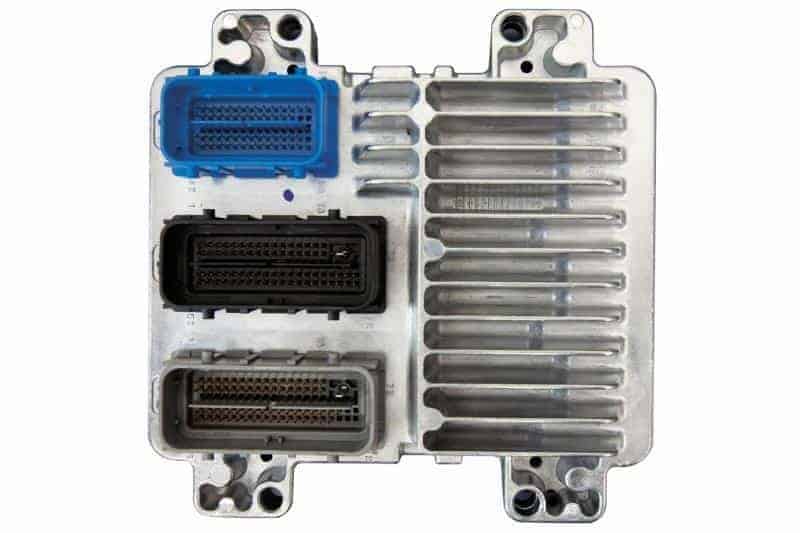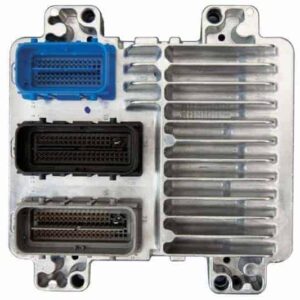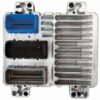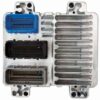Restore Your Vehicle’s Performance with a VIN-Programmed Engine Control Module
Dealing with frustrating engine problems like stalling, a persistent Check Engine Light, or unpredictable performance can turn any drive into a stressful ordeal. As a technician with over 20 years of experience, I know that the Engine Control Module (ECM) is the brain of your vehicle, and when it starts to fail, it can cause a cascade of confusing issues. This isn’t just a replacement part; it’s a reliable, long-term solution designed to restore your vehicle’s factory performance and get you back on the road with confidence.
This isn’t a generic, one-size-fits-all computer. We take the guesswork and extra expense out of the equation. Before this module ships, we will program it specifically to your vehicle’s VIN with the latest GM software updates. This ensures seamless integration with your car’s systems, eliminating the need for a costly trip to the dealership for programming. This is the same process we use in our shop to guarantee a successful repair every time.
Case Study: A Tricky Diagnosis
I recall a 2008 Buick Allure with the 5.3L V8 that came into my bay with an intermittent no-start condition that had stumped two other shops. The owner was frustrated, having already replaced the battery and starter. There were no consistent trouble codes, just a random U0100 (Lost Communication with ECM) that would appear and vanish. After checking the power and ground circuits to the ECM, which were solid, I suspected an internal failure in the module itself, likely a cold solder joint failing under specific temperature conditions. We installed a VIN-programmed ECM just like this one. The vehicle started perfectly every time afterward, and the communication codes never returned. It’s a classic example of how a failing ECM can mimic other problems, making accurate diagnosis key.
Is Your Vehicle Showing These Symptoms?
A failing ECM can manifest in numerous ways. If you’re experiencing any of the following, a faulty engine computer could be the culprit:
- ✔ Unexplained Check Engine Light illumination (Common codes include P0601, P0602, P0606)
- ✔ Engine stalling or shutting off while driving
- ✔ Difficulty starting the engine or a complete no-start condition
- ✔ Noticeable decrease in fuel economy
- ✔ Poor engine performance, hesitation, or misfires
- ✔ Erratic transmission shifting behavior
- ✔ Communication errors with diagnostic scan tools
A Straightforward Guide to Installation
For many models this part fits, the ECM is accessible for a confident DIYer. While the exact location varies (e.g., in the lower air cleaner housing on an Allure, or on the RH firewall on a Colorado), the general replacement process is similar.
- Safety First: Always disconnect the negative terminal from your vehicle’s battery and wait 10-15 minutes for the system to discharge.
- Locate the ECM: Consult your vehicle’s service manual or our fitment list for the specific location of the module.
- Disconnect Connectors: Carefully unclip the wiring harness connectors from the old ECM. These clips can be brittle, so apply steady, even pressure.
- Remove the Old Module: Unbolt the old ECM from its mounting bracket and remove it from the vehicle.
- Install the New Module: Mount your new, pre-programmed ECM in place and securely fasten it.
- Reconnect Everything: Plug the wiring harnesses back into the new module until they click firmly into place. Reconnect the negative battery terminal.
- Perform Security Relearn: On many GM vehicles, you will need to perform a simple security relearn procedure. This typically involves turning the key to the ‘ON’ position for 10-15 minutes, then off, and repeating two more times. This allows the new ECM to sync with your vehicle’s anti-theft system.
Verified Vehicle Compatibility
This module, part number 19210737, is a direct replacement for a wide range of GM vehicles and is interchangeable with service numbers 12590032, 12602044, 12603530, 12605843, 12607096, and 12630457. Please verify your specific model and options below.
ALLURE 08-09 (5.3L), ENCLAVE 08, LACROSSE 08-09 (5.3L), LUCERNE 06/08 (4.6L), RAINIER 07 (5.3L)
Cadillac:
CTS 06 (V-Series), DEVILLE 05, DTS 06/08, SRX 08 (4.6L), STS 06/08 (4.4L/4.6L), XLR 06/08-09
Chevrolet:
COBALT 06 (2.4L), COLORADO 08, HHR 06 (2.4L), IMPALA 06/08-09, MALIBU 06/08-10, MONTE CARLO 06, TRAILBLAZER 07-09
GMC:
ACADIA 07-08, CANYON 08, ENVOY 07-09
Hummer:
H3 08
Isuzu:
ASCENDER 08, I-290 08, I-370 08
Pontiac:
G6 06-09 (3.6L), GRAND PRIX 08 (5.3L), PURSUIT 06 (2.4L), SOLSTICE 06
Saab:
9-7X 07-08
Saturn:
AURA 08-09, ION 06 (2.4L), OUTLOOK 08, RELAY 06 (3.9L), VUE 08-10
Minivans:
MONTANA 06/08-09, TERRAZA 06, UPLANDER 06/08-09
Note: Please check the original description for specific engine sizes, options, and module ID numbers to ensure a perfect match.
Do I really need to provide my VIN?
Do I really need to provide my VIN?
Yes, providing your VIN is essential. This allows us to load the correct, vehicle-specific software and the latest updates from GM onto the module before shipping. This step ensures the ECM will function correctly with your engine, transmission, and other systems, saving you from needing a specialized programmer.
Is this a simple plug-and-play installation?
Almost. Because we pre-program the module, the most complex part is already done. You will need to physically swap the part and then perform a simple ‘security relearn’ procedure, which pairs the new ECM to your car’s anti-theft system. This procedure requires no tools and typically takes about 30 minutes.
Will this fix my Check Engine Light?
If the Check Engine Light is caused by an internal failure of the ECM (like codes P0601-P0606), then yes, this part is the correct fix. However, the Check Engine Light can indicate many other issues. It’s always best to have the codes read by a scanner to confirm the diagnosis before ordering.
What if I order the wrong part?
We strongly encourage you to use our detailed compatibility list and match your part number to ensure you get the right module. By providing your VIN, we perform a final check to confirm compatibility before programming and shipping, which helps prevent errors.



